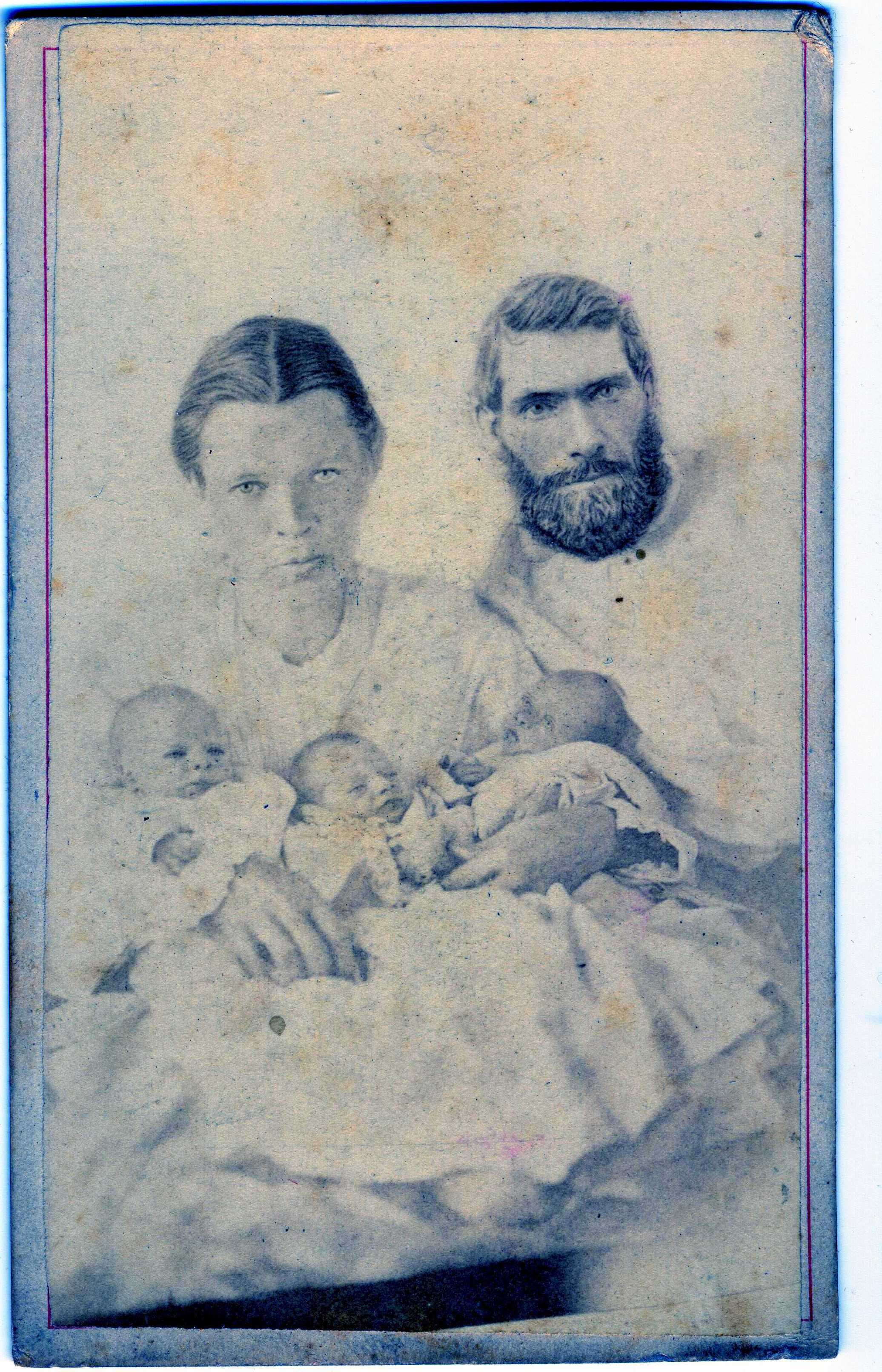Sign up for the Family Tree Newsletter! Plus, you’ll receive our 10 Essential Genealogy Research Forms PDF as a special thank you.
Get Your Free Genealogy Forms
"*" indicates required fields
Judy Linnebach sent me this haunting photo of a couple and their three babies. That’s right, triplets! I don’t have all the answers yet, I’m still working on it. I’ll post the second installment next week.
This image has obviously been enhanced by the photographer—the man’s beard, her hair and all their eyes have additional dark ink added to them. The baby on the right has eyes dotted in. Blue or light green eyes tend to appear very light in early photographs so it’s not unusual to see this type of enhancement.
Since I’m still gathering facts about this picture, the family and the photographer, I have some general impressions but no real answers yet.
I have, however, learned a lot about multiple births in the 19th century.
A century before fertility treatments made multiple births relatively common, it was unusual to bear more than two babies at once. According to George Milby Gould and Walter Lytle Pyle, authors of Anomalies and Curiosities of Medicine, published in 1904 (available on Google Books), most multiple births in the 19th century were to women in the age range of 30 to 34, and heredity was a factor. The odds of having a multiple birth varied by country. In Germany, for instance, it was one in 7,910.
They cite examples of multiple births including a Mrs. Page of Texas, who gave birth to quadruplets in 1890 and was such a sensation that the family toured the following cities: Denver, St. Joseph, Omaha, Nebraska City, and then Boston. She’d already given birth to three sets of twins. I’d love to see a picture of this family! There were 14 children.
Judy wrote that she “hoped this photo is enough to pique my interest.” Absolutely! It’s a complicated story, so bear with me while we sort it out.





